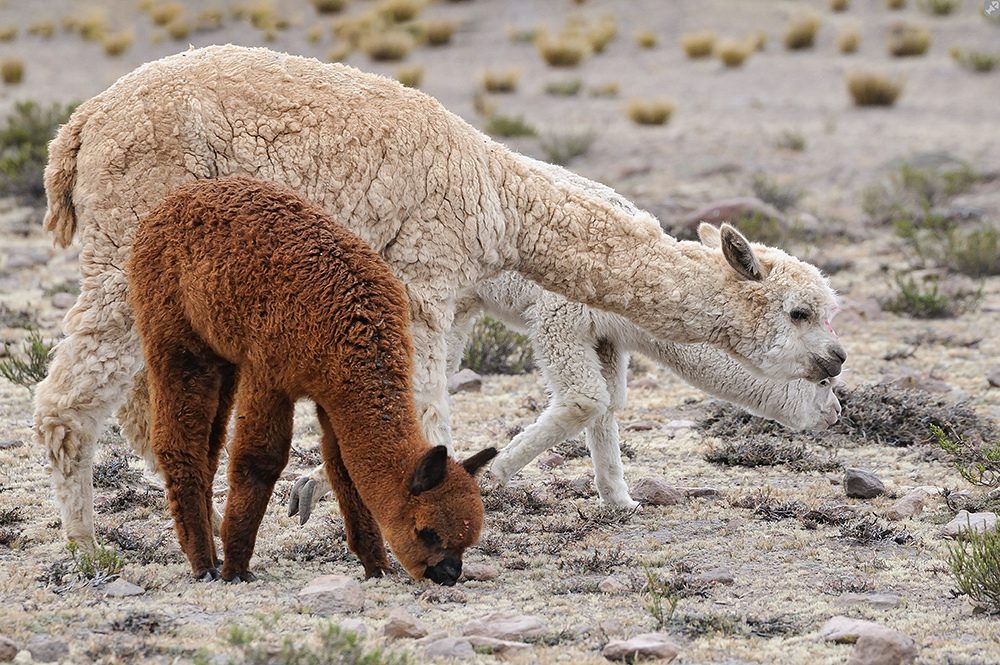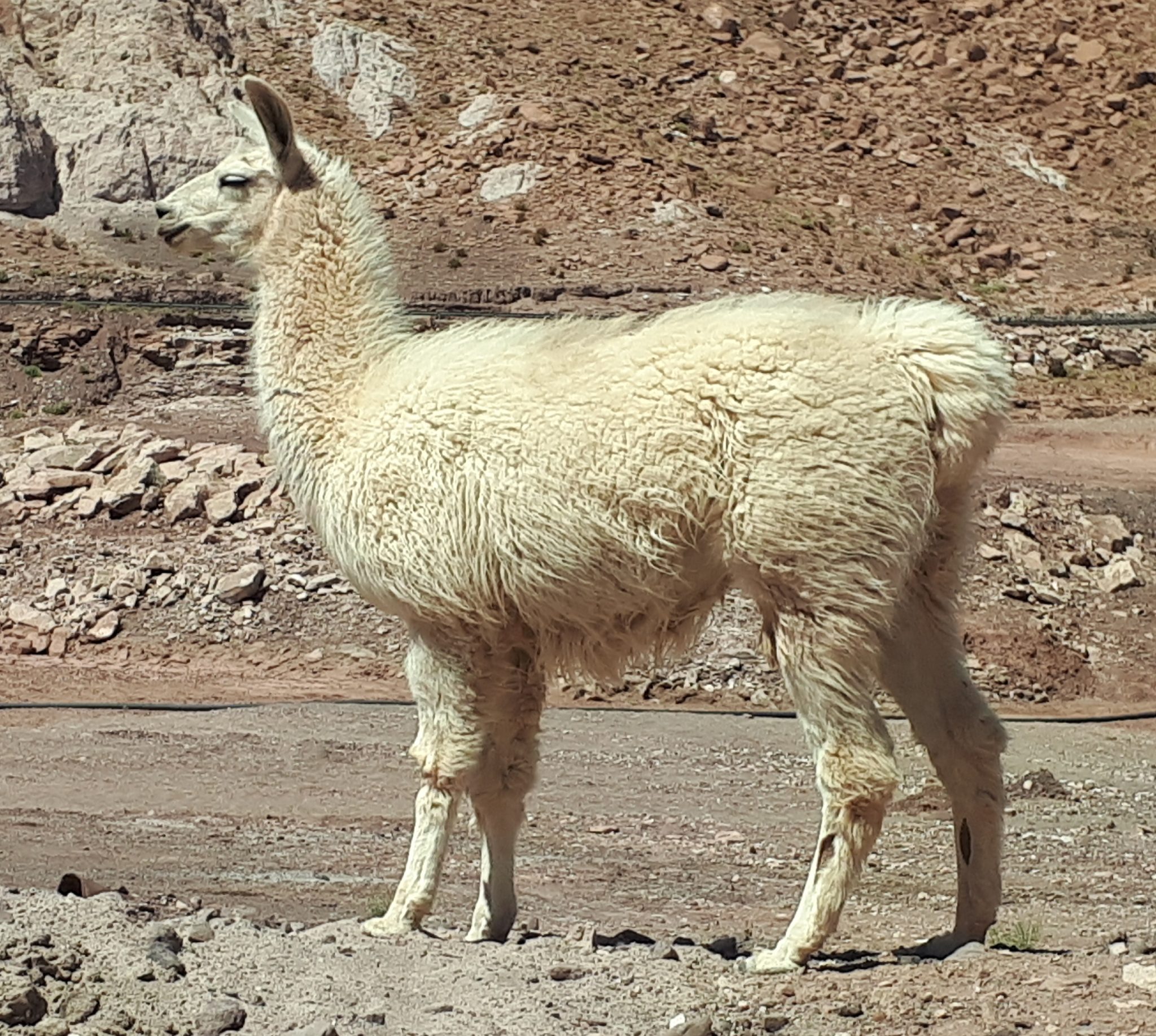If you’ve ever taken a walk around a petting zoo, chances are you’ve come across llamas or alpacas, or even both in the same trip. But can you tell these four-legged fluffy creatures apart? Can you sort your camelids from your camels?
Let’s start with alpacas
Alpacas are the smallest member of the camel family. There are no longer any wild alpacas, and the alpacas you see today are the domesticated versions of vicuñas, similar-looking South American animals that live in the Andes.
Alpacas are much smaller than llamas growing to around 90 centimeters (36 inches) tall at the shoulder. There are two breeds of alpaca – the huacaya and the suri – which are told apart by their very different fur texture and appearance.
Alpacas are highly social animals and are often kept in herds where they can be raised together. Alpaca fleece is commercially available and famous for being incredibly soft while also very strong. Alpacas have the Latin name Lama pacos.
Alpaca faces are generally smaller and more squashed-looking than llamas. They also tend to be a bit more skittish than llamas as well as more social. In terms of diet, both llamas and alpacas are herbivores and ruminants, with a stomach of three chambers, unlike a cow that has four. Because of this, they are very efficient at pulling nutrients from grass and hay.

Alpacas tend to be smaller than llamas, with smaller ears and shorter faces.
Moving onto llamas
Llamas are descended from guanacos, not vicuñas like alpacas. They are important pack animals and have been used by South American communities to transport goods across plateaus and mountains (and even used as sacrifices) for around the last 6,500 years.
Llamas are also domestic species from South America, and a member of the camel family. Alpacas, llamas, guanacos, and vicuñas are four species that are collectively known as lamoids. These four species can all interbreed with each other and produce fertile offspring – offspring of a male llama and a female alpaca are called huarizos. Llamas are the largest of these four species and can grow to around 120 centimeters (47 inches) tall at the shoulder. Their Latin name is Lama glama.

Llamas are generally taller, with a coarser coat and longer ears.
The three biggest differences between alpacas and llamas are their size, their coat, and the shape of their faces. Llama ears are much longer than alpaca ears, and their noses are longer too. Llama fur is much more coarse and not as highly sought after as alpaca wool. Temperament wise, llamas are thought to be less skittish than alpacas and have even been used to guard livestock.
Both of these species are very important in South America where their fleece, meat, and even dung are used by the communities.
Source Link: Llama Vs Alpaca: Do You Know The Difference?